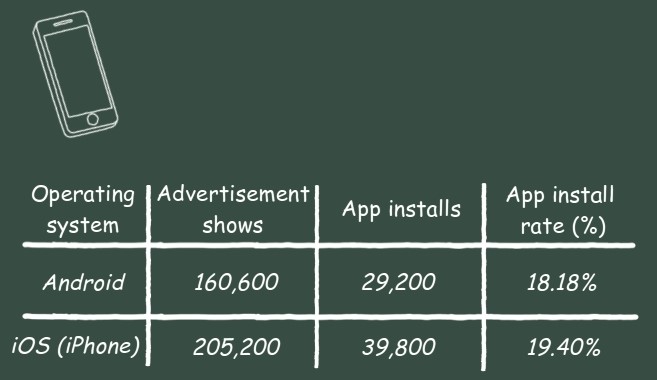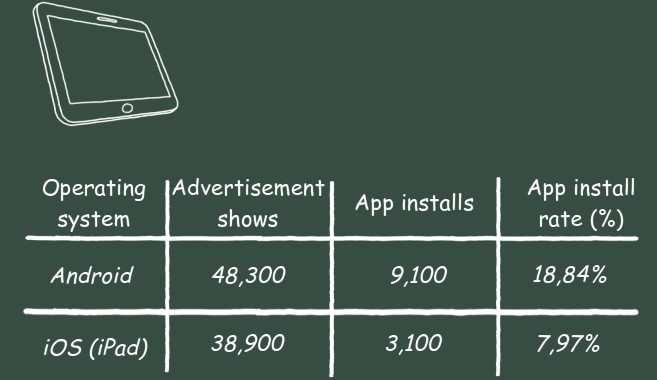Percent Problems in Business Development
Introduction:
In simple terms, business development is everything to make a business grow. It has many parts, like sales, marketing, research and development, and others. In our example demonstrating the application of percent problems in business development, our focus will be on marketing.
Example:
The company X released an app for smartphones and tablets and then launched an advertisement campaign. The results among smartphone users are shown below:

As you can see, the advertisement was shown to 160,600 Android phone users, whereas 29,200, or 18.2% of users, have installed the app. The advertisement was also shown to 205,200 iPhone users, whereas 39,800, or 19.4%, have installed the app.
The results among tablet users were as follows.

The advertisement was shown to 48,300 Android tablet users, whereas 9,100, or 18.8% of users, have installed the app. Out of 38,900 iPad users who saw the advertisement, 3,100, or fewer than 8%, have installed the app.
Now the company must decide whether the app is more popular among Android or iOS users to plan its development budget. Do you think the company should concentrate on Android or iOS users?
Analyzing Percentages.
We can see that the app is equally popular for phone users (18.2% for Android and 19.4% for iPhone). But among tablet users, Android is clearly the winner (18.8% vs. 8%). But does it mean that the app is overall more popular among Android users?
In order to understand it better, let’s sum up the data in these tables.
- For Android, it makes 208,900 users (160,600+48,300) who saw the advertisement. 38,300 have installed the app, which makes 18.3%.
- Let’s do the same for iOS users: out of 244,100 iOS users who saw the advertisement, 17.6% have installed the app.
And here is what we have got: shares of Android and iOS users who have installed the app are actually almost equal (18.3% vs. 17.6%). Therefore, it might be reasonable for the company to concentrate on both Android and iOS users in their business strategy.
Conclusion:
The power of math is that it allows us to analyze business data without bias. This is crucial in many aspects of our life, and the example above proves it. Practical understanding of percent problems helps make better decisions in business, finances, engineering, sports, manufacturing, psychology, and many other fields.
Video version:
Further Reading:
We’ve also covered how solving percent problems is useful in real-life scenarios in our other articles:
At DARTEF, we specialize in explaining how math and science are applied in the real world. We have more articles demonstrating the practical use of math in marketing:
